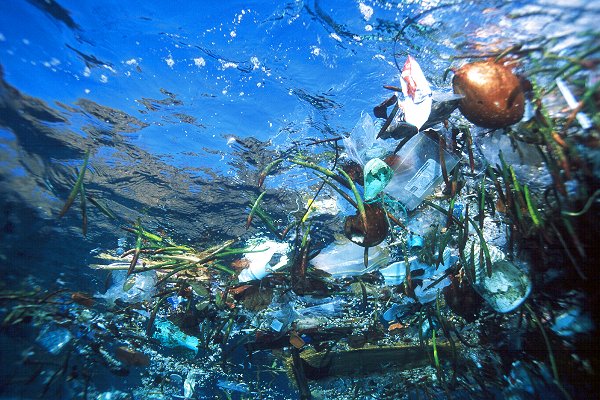Researchers testing the amount of plastic garbage polluting the earth’s oceans have discovered a mystery. Instead of finding evidence of the millions of tons of durable plastic garbage expected to litter the ocean surface, they found only tens of thousands.
In the 1970s, the National Academy of Sciences estimated that 45,000 tons of plastic garbage reached the world’s oceans every year. Today the world produces five times as much plastic as it produced in the 70s, so researches expected to find evidence of millions of tons of plastic garbage in the oceans. They were surprised that after looking at over 3,000 samples, they found only 7,000 – 35,000 tons of plastic garbage.
The research was conducted by ecologists at the University of Cadiz in Spain. The report, “Plastic debris in the open ocean,” was completed by Andrés Cózara, Fidel Echevarríaa, Ignacio González-Gordilloa, Xabier Irigoienb, Bárbara Úbedaa, Santiago Hernández-Leónd, Álvaro T. Palmae, Sandra Navarrof, Juan García-de-Lomasa, Andrea Ruizg, María L. Fernández-de-Puellesh, and Carlos M. Duartei, and was published by the National Academy of Sciences.
The researchers do not know where the missing garbage has gone. The researchers did find clues, however. A primary piece of evidence was that far fewer plastic fragments under 5 millimeters were found than larger fragments.
The researchers guessed that somehow the smallest pieces of plastic were finding their way to deeper waters.
Another guess was that mesopelagic fish, which inhabit the oceans at 660-3,300 feet below the surface, were feeding on the plastic fragments when they came to the surface at night. The researchers pointed out that the normal food of these fish is roughly the same size–zooplankton. When the fish excrete the debris, it may sink deeper, or the debris may be carried deeper when the fish die.
Another finding was that bacteria was growing on the plastic fragments. The bacteria’s weight may be pushing the fragments down, the researchers suggested.
These guesses were phrased by the researcher this way: “Our observations of the size distribution of floating plastic debris point at important size-selective sinks removing millimeter-sized fragments of floating plastic on a large scale. This sink may involve a combination of fast nano-fragmentation of the microplastic into particles of microns or smaller, their transference to the ocean interior by food webs and ballasting processes, and processes yet to be discovered.”
The surprising finding led the researchers to conclude a further question was pending. “Resolving the fate of the missing plastic debris is of fundamental importance to determine the nature and significance of the impacts of plastic pollution in the ocean,” the researchers stated.
By Sid Douglas
